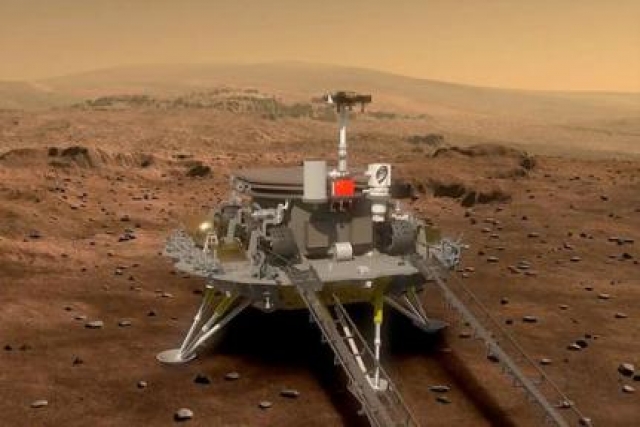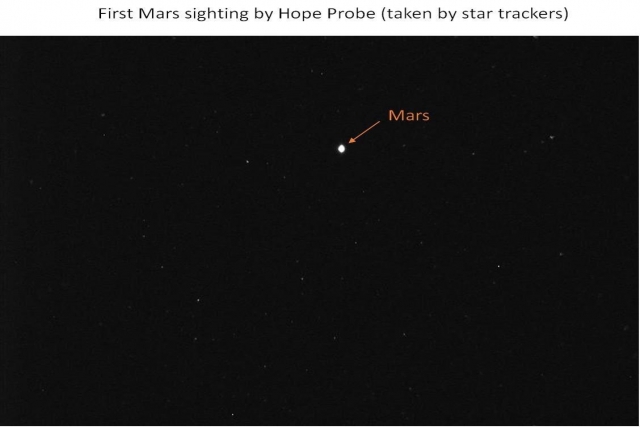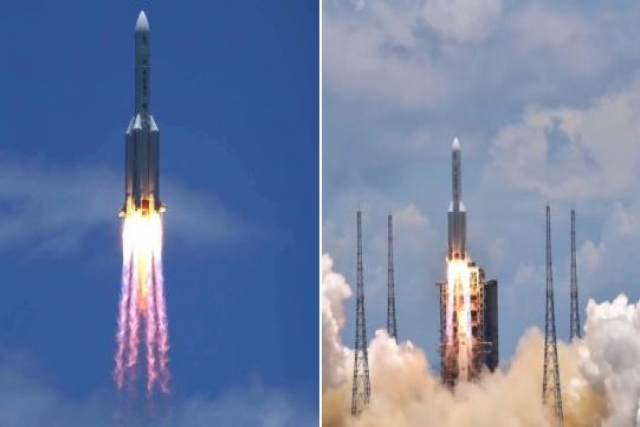China Launches Rocket with Mars Probe

Days after the United Arab Emirates (UAE) launhed its Mars-bound Hope Probe, China has followed its suit.
On July 23, Beijing launched a Mars probe designed to complete orbiting, landing and roving in one mission.
China’s Long March-5 rocket carrying the spacecraft that weighs 5 tonnes blasted off to space from Wenchang Spacecraft Launch Site on the coast of southern China's Hainan province.
The country unveiled the name “Tianwen-1” for its first Mars exploration mission on April 24.A day later, National Astronomical Observatories of the Chinese Academy of Sciences (CAS) uccessfully completed the integral hoisting of the reflector for GRAS-4 antenna in Tianjin City. With its main reflector being 70 meters in diameter, the GRAS-4 antenna weighs about 2,700 tons and is equal to the size of nine basketball courts. The technology adopted could greatly improve its efficiency and anti-interference capability, as well as reduce the noise of the system.

The craft is expected to enter the orbit of the red planet around February 2021. Afterwards, it will spend three months surveying potential landing sites using a high-resolution camera to prepare for the landing in May. A potential landing site chosen by experts is a relatively flat region in the southern part of the Utopia Planitia.
“The most challenging part of the mission will be the soft landing, an autonomous process of the probe lasting seven to eight minutes. The probe will use its aerodynamic shape, parachute and retrorocket to decelerate and buffer legs to touch down,” Geng Yan, an official at the Lunar Exploration and Space Program Center of the CNSA, was quoted as saying by Chinese media.
After the landing, the rover will be released to conduct scientific exploration with an expected lifespan of at least 90 Martian days (about three months on Earth), and the orbiter, with a design life of one Martian year (about 687 days on Earth), will relay communications for the rover while conducting its own scientific detection, China Military reported.

The orbiter is equipped with seven kinds of scientific instruments: two remote-sensing cameras, Mars-Orbiting Subsurface Exploration Radar, Mars Mineralogy Spectrometer, Mars Magnetometer, Mars Ion and Neutral Particle Analyzer, and Mars Energetic Particle Analyzer.
The six-wheel solar-powered rover, looking like a blue butterfly with a mass of 240 kg, carries the Terrain Camera, Multispectral Camera, Mars-Rover Subsurface Exploration Radar, Mars Surface Composition Detector, Mars Magnetic Field Detector and Mars Meteorology Monitor.
The scientific goals of the mission include mapping the morphology and geological structure, investigating surface soil characteristics and water-ice distribution, analyzing the surface material composition, measuring the ionosphere and the characteristics of the Martian climate and environment at the surface, and perceiving the physical fields and internal structure of Mars.









